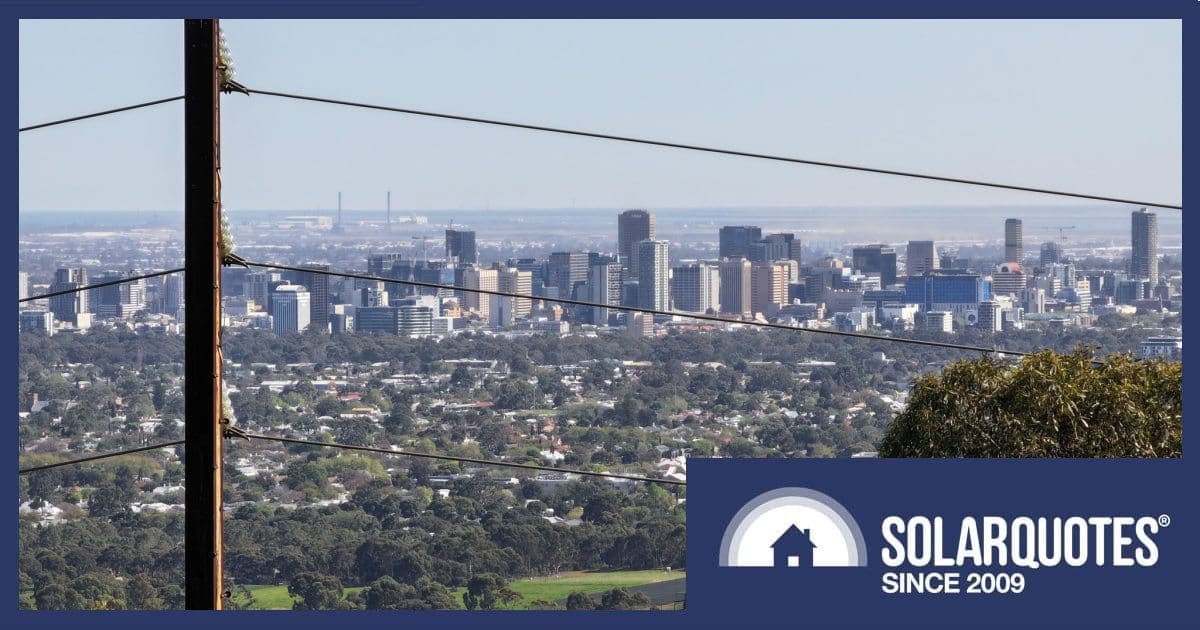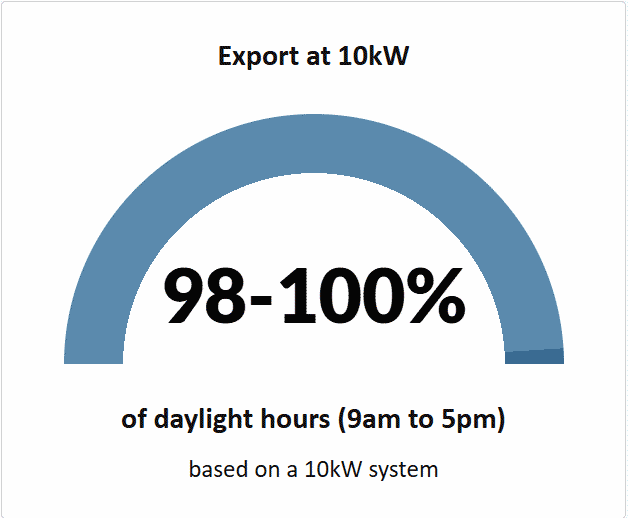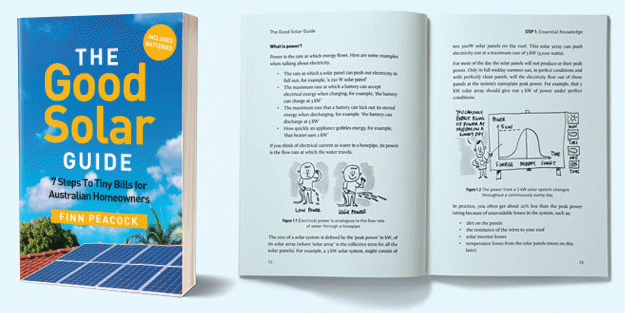
A change in peak period times for South Australian customers on a Time of Use (ToU) electricity plan will soon kick in, plus SA Power Networks (SAPN) has provided an update on flexible solar exports availability in regional areas.
Time Of Use Tariff Peak Time Changes
Yesterday I received a notice from our energy retailer stating the state’s electricity distributor, SAPN, is changing its peak, shoulder and off-peak times from July 1, 2025 for the Time of Use network tariff structure we’re currently on. I’m assuming this will apply to most if not all other residential customers on a ToU electricity plan in South Australia.
Peak time periods will be reduced by two hours, with an hour being added onto both shoulder and off-peak times.
Before:
- Peak: 6.00am to 10.00am, and 3.00pm to 1.00am
- Shoulder: 10.00am to 3.00pm
- Off-peak: 1.00am to 6.00am
From July 1, 2025
- Peak: 6.00am to 10.00am, and 4.00pm to midnight
- Shoulder: 10.00am to 4.00pm
- Off-peak: Midnight to 6.00am
The times apply 7 days a week.
The difference in rates we’re currently paying our retailer is significant:
- Peak: 51 cents per kilowatt-hour (kWh)
- Off-Peak: 31 cents/kWh
- Shoulder: 19 cents/kWh
An example of where this change may be particularly beneficial is for EV owners charging at home. For us, the change means if solar conditions are poor and our electric car really needs to be charged, we can get an extra ~7 kWh into it from mains supply for $1.33 instead of $3.57 if we charge past 3pm for an hour. That will be handy.
On a somewhat related note, what isn’t so handy is another recent announcement from SAPN regarding an upcoming solar export tariff.
Flexible Solar Exports Update
Back in 2017, SAPN set a solar inverter export limit of 5kW on single-phase connections as standard to help manage the rapidly increasing amount of solar energy in SA’s grid during the daytime. Then pioneering flexible exports started being rolled out in 2023 to enable a much higher limit — up to 10 kW per phase.
How Flexible Exports Work
When the amount of solar in the grid starts making SAPN nervous, exports may be automatically adjusted down to as low as 1.5 kW through signals sent remotely to compatible solar inverters, then adjusted back up to as much as 10 kW when the situation passes1.
You can see an example of flexible exports curtailment in action here.
Since 2023, it’s been a requirement for all new grid-connected solar inverters installed in South Australia to be compatible with this feature. But where flexible exports have been available and can’t be used, for example in a case where there is no reliable internet connection; then a 1.5kW fixed export limit per phase applies. It’s the same situation where an existing solar customer with a new or upgraded system (inverter) chooses not to participate in the flexible option.
According to SAPN, more than 88% of eligible customers have been choosing flexible exports. Funny that.
Existing customers with solar panels can still remain on their current export arrangements until such time as they upgrade or replace their system. At that point, they’ll need to make a choice between flexible or fixed.
You can find out your individual export capacity by entering your National Meter Identifier (NMI) or address into SAPN’s Flexible Exports Eligibility Checker. We haven’t signed up for the option at our place, but running the eligibility checker shows the following flexible exports performance in our area for the past 12 months.
Flexible Exports Availability Expands Again
The rollout of flexible solar exports has occurred in stages, and yesterday SAPN announced the option has been released to remaining council areas in regional South Australia previously without it.
Regional customers not connected to a single-wire earth-return (SWER) line will have a choice between a fixed export limit of 1.5 kW/phase, or flexible export limit of up to 10 kW/phase (with a fall-back limit of 1.5kW).
Regarding SWER-connected customers, SAPN mentioned back in March it was working on offering flexible exports.
SAPN confirmed yesterday that most customers in regional areas connected to a SWER line will be able to install up to 10 kVA of inverter capacity through a flexible exports connection, up from 5 kVA. The flexible export limit will be up to 10kW/phase, with a fall-back limit of … zero kilowatts.
“In a change to our generation connection standard TS129, SWER customers will be offered a limit of 10kVA installed solar and 10kVA battery capacity, allowing you to install more solar and battery,” says SAPN. “Your solar energy exports may be limited more than other customers however, you can still make the most of your larger installation by self-consuming the energy it generates.”
For SWER customers going solar or upgrading their systems and not wishing to participate, it’s really a case of Hobson’s choice as the fixed export limit is 0 kW.
Footnotes
- If that doesn’t work and the situation is reaching emergency level, the ‘big red button‘ may be used. ↩


 RSS - Posts
RSS - Posts



AGL isn’t reflecting these changes in their rate change notice I received on 11 June 2025.
So on average that translates to about 10 minutes of export limiting per day, or did I goof with my maths?
10 minutes sounds right with up to 2% curtailment in the area they have tested in, but that does not mean the same figure going forward as more people add solar or add to existing systems.
As the price of the FIT keeps dropping toward 0c the effect of curtailment becomes more irrelevant anyway, but the value of having increased PV installed is very valuable to offset purchase of electricity at ever higher rates.
Howdy …thanks for this blog article …you mentioned that you guys haven’t signed up for flexible imports?… with our electricity provider (origin) now offering a FIT of 2cents per kilo-watt hour & selling it to my neighbour for up to 50+cents, we feel strongly inclined to boycott Origin & set out export to 1.5kwh as our max, from our 13kw solar array …is there any disadvantages to doing this, that we may not be aware of, aside from blocking a large portion of our clean energy from going onto the grid?
Hi Hamish,
When you set an arbitrary export limit the whole grid misses out on the potential to drive prices down & reduce the need for grid augmentation.
Seeing as the STC scheme has granted you an up front discount on your system, (counting on its ability to displace fossil pollution) hard export limits are effectively damaging the return on investment we’ve all signed up for using the Renewable Energy Target.
The best arrangement is flexible exports which curtail when it’s technically needed.
They mean your system could generate between 30% or even 98% more energy in winter… right when everyone needs it and prices are good.
As more batteries enter the NEM, we can soak up more solar, but not if you’re refusing to share.
…okay thanks for sharing your perspective…you’re not able to share with us, why you’ve elected to not participate in flexible exporting yourself?…or did I perhaps mis-read the article? …”We haven’t signed up for the option at our place, but running the eligibility checker shows the following flexible exports performance in our area for the past 12 months.”
Hi Hamish,
That would be a question for Michael but perhaps he’s on a legacy feed in tariff?
Going forward everyone is going to want flexible exports as it will be an attractive proposition to make your retail offer work in a dynamic market.
Fixed export limits are nearly as dumb as “going off grid” when you already have a connection.